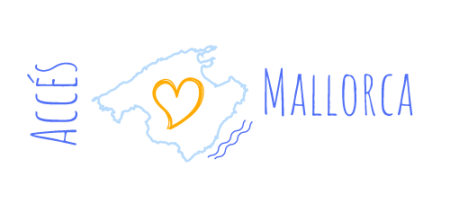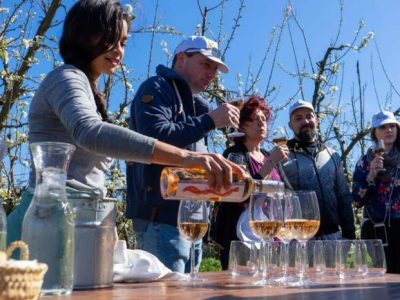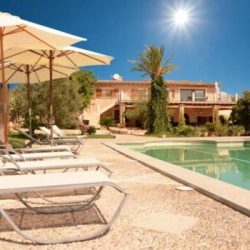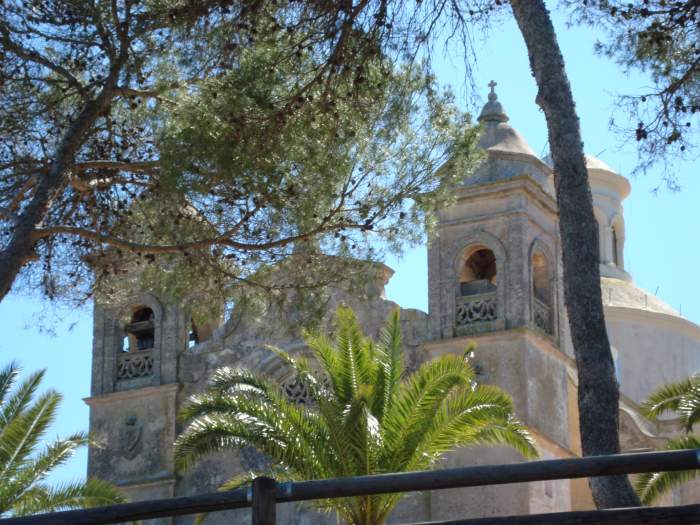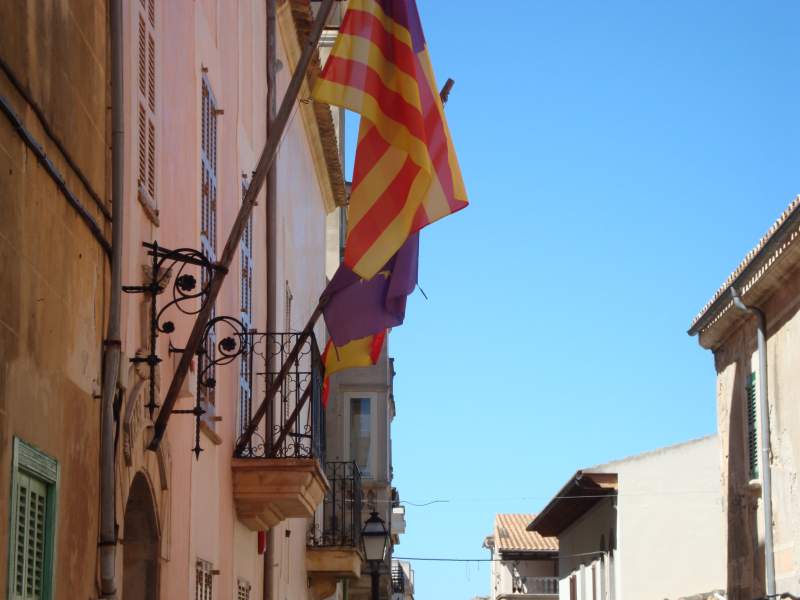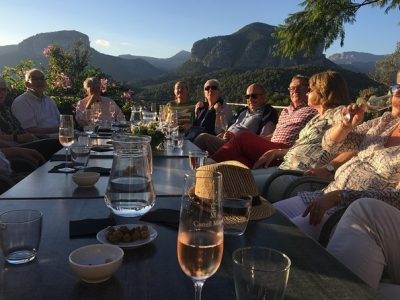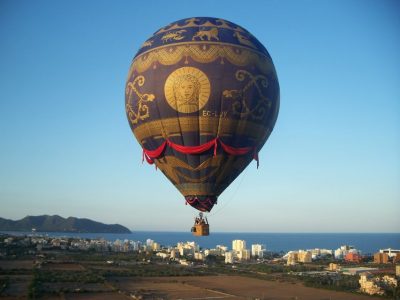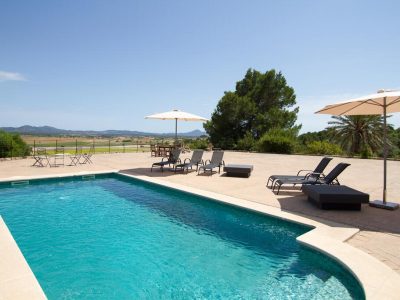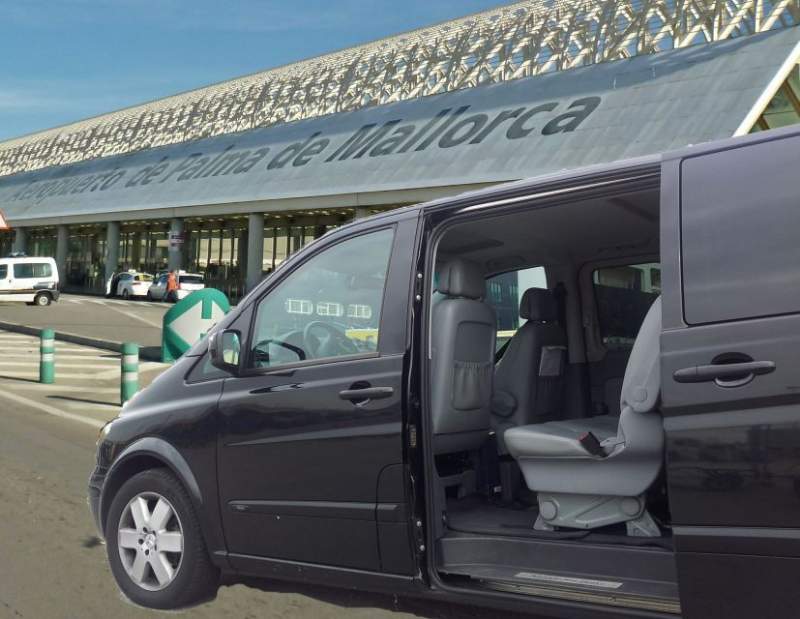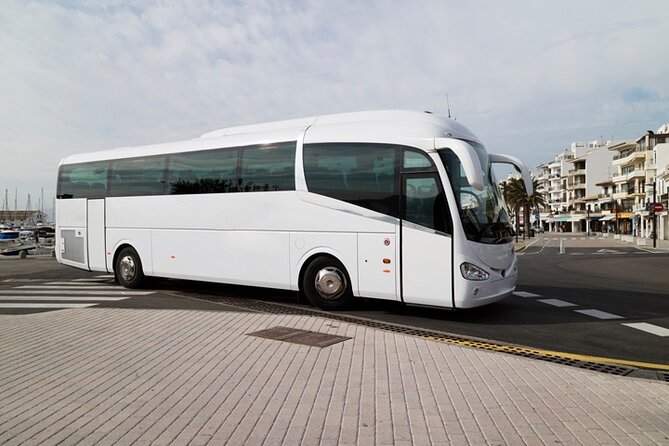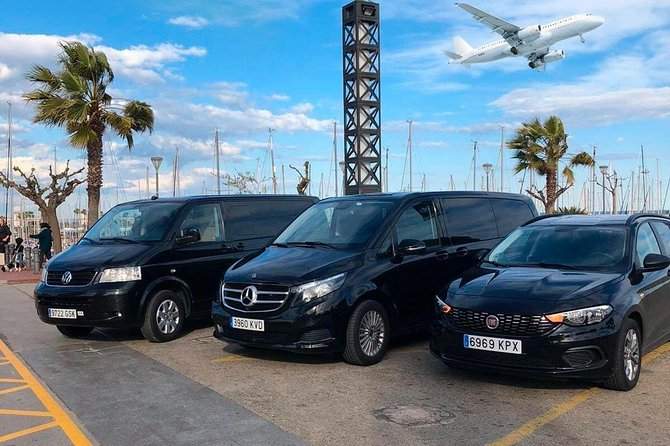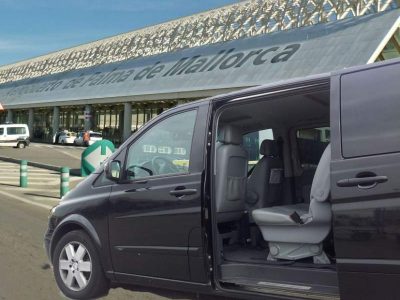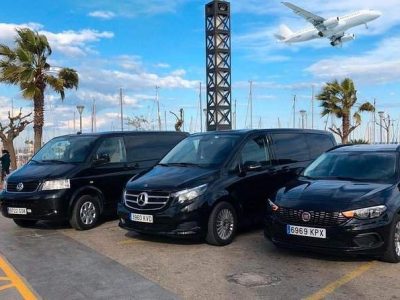All your holiday planning needs in one place, letting you book direct and benefit from official online rates
- Places To Go
- Things To Do
What’s Your Interest?
Traveling with kids
- Blog
Petra, Mallorca, Things to do and see, hotels, market
Petra is in many ways the epitome of a pastoral village, as there are only a few places in Mallorca that are so marked by religious tales. It was here in Petra that famous lay brother and preacher Junipero Serra came from, before going to America and losing his life during a mission. He was later canonized in Washington. Several of the area’s sights are also connected to the story of this child of the village, whom has become synonymous with Petra.
But Petra is also an incredibly charming little village, so whether you appreciate the many stories or not, you should still take a trip to Petra, where you can look forward to an always wonderful atmosphere on the village’s central square, the annual parties as well as one of the area’s best eateries.
- This is where I want to go!
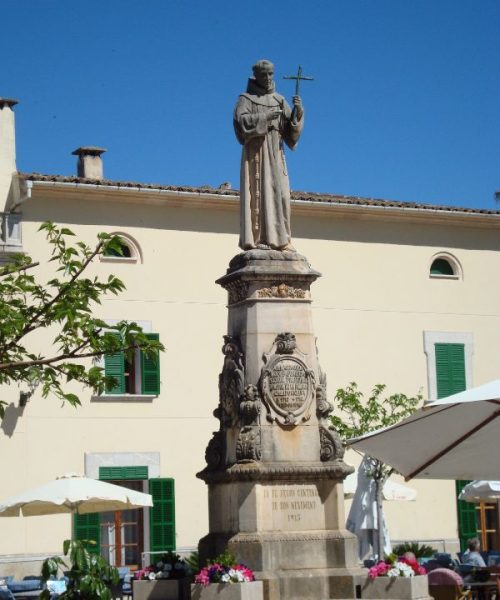
Why visit Petra
Is Petra worth visiting?
Petra boasts pastoral charm that is present everywhere in the narrow streets of the small village. While you can hear a flea move in the small streets, the central square is an absolute contrast. Here, a handful of bars keep the village alive all day long.
Petra is home to one of the best restaurants in the area, Es Celler, where you’ll find traditional Mallorcan cuisine in very authentic settings.
Outside the village, on a mountaintop, you will find the church and monastery of Bonany, atranquil place offering divine panoramic views of the entire plain of Mallorca.
So, is Petra worth a visit? Yes.
Things to do in Petra
Petra is a great area for sightseeing, cultural experiences and physical activities. Many of the sights here are related to famous lay brother Juniperó Serra, who is canonized in Washington. The beautiful and peaceful countryside makes Petra attractive to walkers and cyclists, who can look forward to a number of challenges and picturesque places.
VISIT THE SANCTUARY OF BONANY
Enjoy a scenic and beautiful excursion to the hilltop sanctuary of Bonany in 313 meters, from where you can admire the panoramic views of the Pla region, you can even see all the way to the bay of Alcúdia. The church and hermitage is emblematic for the entire area, for many years it was used as a place of veneration of gods by peasants who came to pray for rain. If you brought your hiking shoes you can make the way via the pilgrimage path.
HOUSE MUSEUM AND BIRTHPLACE OF JUNIPERO SERRA
If any name is synonymous with Petra, it is Junipero Serra, the famous Franciscan fray and missionary who was killed and later canonized in America. In the museum, you can explore a range of personal items, furniture from that time and scripts written by him. This is a unique insight in the life of the perhaps most famous Mallorcan ever.
ENJOY A MEAL AT ES CELLER
Es Celler is probably one of the best eateries in Petra, and in the surrounding area. This is a popular place for the local families to have their Sunday lunch, and it is not unusual to wait for half an hour to be seated here. But believe me, it is worth it!
PAROCHIAL CHURCH OF SANT PERE
This imposing Gothic construction with Renaissance attributes is not only the crown of the town, but also a real life evidence of how wealthy an area Petra was during the Middle Ages. The enormous dimensions of the church and the fascinating artworks and altarpieces inside witness of a big and dedicated congregation. This was also the place where famous Petran missionary, Junipero Serra was baptized.
GO BIKING IN THE COUNTRYSIDE
Petra is highly popular amongst cyclists, the area is perfect for road cycling. To the west, north and south, you can enjoy the many silent and spacious country roads. To the east, you can easily reach the stunning coastlines and many golden beaches. From neighboring area of Manacor, you can catch the Via Verda (Green Way), the only of its kind in Mallorca.
RECTORY
The rectory of Petra is a beautiful little place on the opposite side of the road from the parochial church of Sant Pere. Especially the sculpture in the small garden of a peasant woman representing the agrarian heritage of the area makes it worth a visit.
CONVENT OF SANT BERNADÍ
This stunning old Franciscan convent from the 17th century is evidence of prosperous times in Petra. Moreover, this convent was the place where Junipero Serra received his education and swore forever trust and dedication to the Franciscan order.
MONUMENT OF JUNIPERO SERRA
A small monument constructed in the 20th century to mark the 200th day of Junipero Serra’s death. The monument displays an imagery of the four major stages in his life.
PLACA DE JUNIPERO SERRA
In the main square of Petra, you will find an impressive statue of Fray Junipero Serra put in 2013 to mark the 300th anniversary of his birth. The square is surrounded by palm trees and benches made from stone from the Sant Bernadí convent.
CASA DE LA VILA
The Casa de la Vila is the town hall of Petra. The building was erected in the early 1500’s as the hospital of Petra, another indicator that this town was wealthy and had a big population. It was converted to town hall in 1837, when the clock tower was added. Inside, you can observe the original and interesting paintings of the Serra family, the most noticeable family name in the area.
IMAGE GALLERY
Enjoy some beautiful pictures from Inca
FAQ
Petra is known for the Mallorcan preacher, Fray Junipero Serra, whom was born in the village and canonicalized in Washinton DC.
You’ll find some great beach within a short drive from Petra, namely the beaches of Porto Cristo, Cala Mendia, s’Illot, Sa Coma and Cala Millor.
Events in Petra

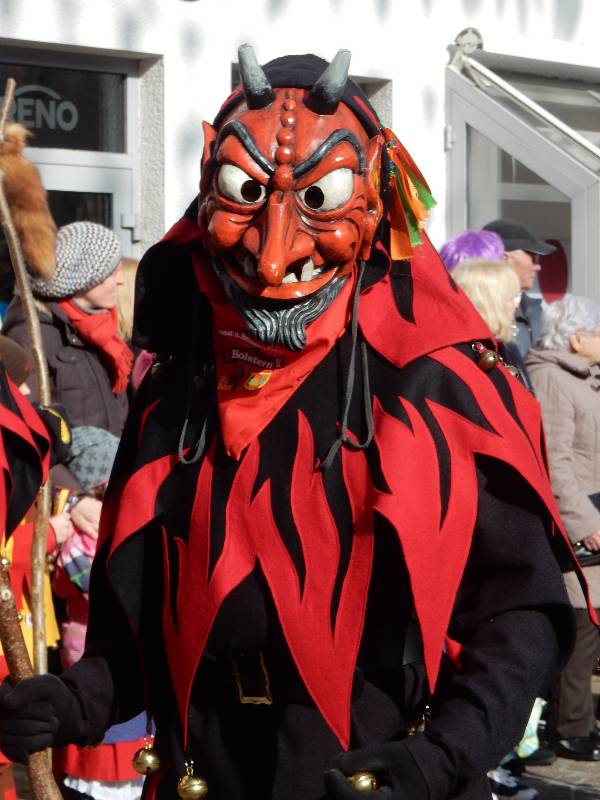
Weekly market in Petra
On Wednesdays the weekly market is held in Petra. This is a traditional fruit and crafts market offering typical Mallorcan commodities from local producers.
Annual events and happenings
January
Festes de Sant Antoni
In most Mallorcan villages, especially those in the rural districts, Sant Antoni is an important saint as he is the protector of domestic animals. On the night of January 16, bonfires are lit all over the town and dances are performed to the sound of traditional Mallorcan music. On January 17, the official day of Sant Antoni, blessings are given by the church.
April
Easter celebrations
Easter is always a great time to visit Mallorca, most villages does a lot to mark this time with festive events. In Petra, one of the unique events happens on the Tuesday after Easter Sunday when a massive picnic for the whole town is arranged where everyone walks from the town to the sanctuary of Bonany.
July
Festes de Santa Praxedis
Santa Praxedis is the patron saint of Petra, a Roman martyr from the second century BC buried in the catacomb of Priscilla. Her feast day in on July 21, however, in the two weeks leading up to this date the town hosts its summer festivities to mark this event. During these two weeks, you can enjoy a wide range of fun and interesting activities and events, such as parades, traditional Mallorcan music and dance performances, games, gastronomical experiences, exhibitions and much more.
During the summer party weeks, there are especially two traditional events that is worth experiencing; the summer carnival and the Festa de ses Clovelles. Festa de ses Clovelles (feast of the husks), is a fun event taking place in the afternoon hours where the patron saint of Santa Praxedis steals the key to the town hall from a demon, overcomes a set of obstacles and struggles and fights her way to the town hall to free the people of Petra. From the balcony, she sprays water and almond husks all over the people that starts partying.
September
Fira de Petra
On the third Saturday of September, the Petra fair is celebrated in town. The heart of Petra is filled with stalls and stands of every kind, selling clothes, crafts, foods and more at good prices. The day after the fair, there is a tribute parade to Juníper Serra, the famous missionary from Petra. If you are keen on finding a good deal on new additions to your wardrobe, don’t miss this event.
October
Mostra d’Art i Empresa a Petra
The last Sunday of October is dedicated to local business and art, a unique combination that has resulted in a fair held for more than 30 years in Petra. At the fair, you can enjoy exhibitions and sales of almost any kind of products, such as paintings, equipment, cars, flowers, machinery, home decor, foods, wines and much much more. This is combines with a mixture of street art giving the normally so sleepy streets of Petra a vibrant exterior.
December
Festes de Nadal
From the beginning of December and well into January, the feast of the Lord is celebrated in the streets of Petra. There will be all kinds of activities and Christmas markets held during the month spreading joy in the hearts of children and adults.
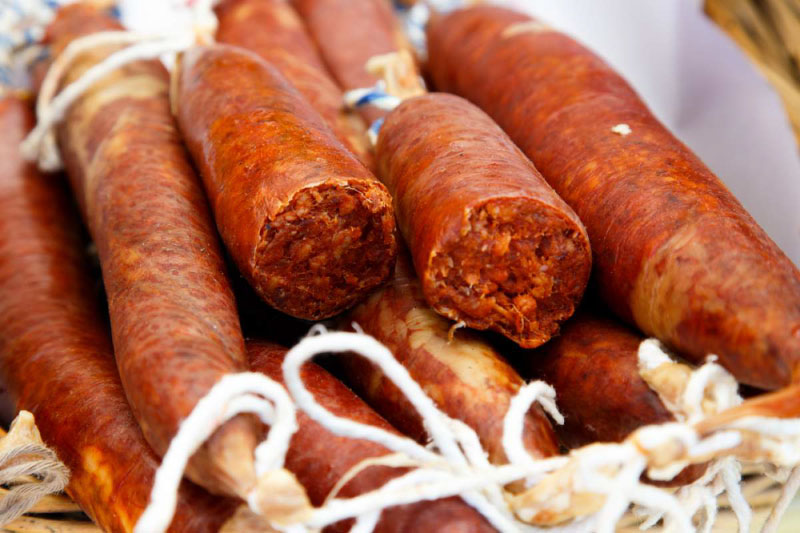
Support Local
Supporting local communities during your travels can have a profound impact. Stock up with groceries locally, stop in an artisan shop or enjoy a refreshment at a restaurant or bar. Now more than ever, these small businesses need support from travelers near and far.
Get to know the area of Petra
Petra is a town and municipality in the rural region of Mallorca know as “es Pla” or “Pla de Mallorca”. The municipality comprises a surface of 6.998,16 hectares with 1.729,99 of those protected. As of 2018, the population is 2,825 inhabitants.
The main sources of income comes from agricultural activities, mostly cereals, and from production of stones and clay.
History of Petra
The history of human occupation in the municipality of Petra begins in prehistoric times, in the undefined Pre-Talayotic era about 2.400 BC. From this time, a series of natural and human constructed caves has been discovered, such as the Cueva de Son NIVorra, Cueva de Son Roca, Cueva de Son Bacs, Cueva de Ses Cabanasses, Cueva de Es Cabanells Nous, Cueva de Sa Canova D’ariany, Cueva de Ses Comunes Noves and Cueva de Ses Comunes Velles.
From the Talayotic / Talaiotic era (1.100 – 300 BC), some of the excavations include the Talaiot de Son Boscà, Talaiot de So N’homar, Talaiot de Termenor and Talaiot de San Vellana.
All in all, more than 40 archaeological sites are categorized within the municipality borders of Petra, which makes it one of the areas with most prehistoric activity.
In 123 BC, general and consul of Rome, Quintus Caecilius Metellu, conquers Mallorca and makes it part of the Roman empire to prove himself as a master of strategy and warfare. The Romans had been fighting Phoenicians and Carthaginians in the Punic wars for centuries in the Mediterranean region, and Mallorca was a highly strategic point. The Romans left Mallorca in the 5th century AD, and from that time imperial coins and ceramics has been found in the area along with burial sites and funerary gifts. It is uncertain when the Romans left the island, but archaeologists suggest that it was in the 5th century.
In the time between 902 and 1229, Mallorca was under Muslim dominance by the Moors. During that time, Petra was part of a district known as “Yityau-Bitra”, which also comprised the areas of Sineu, Sant Joan, Ariañy, Lloret de Vistalegre and Vilafranca de Bonany. The Moors settled in small communities, or clans if you will, in farmhouses and huts from where they could cultivate the soil. Undoubtedly, the torrent of na Borges had been the most vital natural source of the area allowing the Moors to collect water.
Following the Christian reconquista in the years 1229 – 1232, the district of Yityau-Bitra was distributed amongst knights of king Jaume I of Aragón, however, still a part of his kingdom. Later it fell in the hands of his successor, King Sanç. From the 14th century, Petra was divided amongst the families of Burgues, Sant Joan, Sant Martí, Desbach and Sureda.
In the year 1300, King Jaume II of Mallorca constituted the town of Petra with a set of ordinances, taking the name from its original name of Bitra. An urban nucleus and grid was planned out with the necessary infrastructure to service the about 100 inhabitants.
During the 15th and 16th century, Petra started to rapidly develop as an agricultural community with its main production of cereals. Actually, Petra was one of the places in Mallorca with the biggest population at that time. What more made Petra interesting an wealthy in the Middle Ages, was the many quarries, which also has been used for constructing the parochial church and the Sant Bernadí convent in town.
Although droughts and epidemics caused multiple setbacks for the community, however, the belief that with hard work and sacrifice things will turn to the better. For this reason, there is an old saying in the area that goes: “The devil surrendered in Petra”.
Improvements in agricultural techniques through the 16th and 17th centuries meant that Petra could slowly grow more prosperous as a society. Due to the growing population and incomes, major donations also came to the church, the old Saint Peter’s Church was demolished in 1581, in order to build a new and bigger church that could accommodate the growing congregation.
In 1607, the Franciscan order settled in Petra and within the same century they had already erected the imposing convent of Sant Bernadí.
In 1714, a boy with the name of Miguel José Serra Ferrer is born in Petra and baptized in the parochial church of Sant Pere. Already in an early age he was accepted in the Sant Bernadí to receive his education, and in the age of 17, he swore to dedicate his life to the order. His intellect was undoubtedly illuminating, and it soon showed that he was a great medium for the entire religious world. From this time, he took his Franciscan name in use; Junipero Serra. He started teaching religion even before he had finished his own doctoral in theology. Later on, he founded missions in Mexico and California and became renown as the most influential spiritual leader. There are several monuments of him in Mexico, California and in Washington where he was canonized in 2015.
The end of the 18th century was the beginning of Mallorca’s great wine adventure, where Petra, like many other areas of the island, benefited from the great European demand. Especially when the dreaded wine plague in the form of wine lice (Phylloxera) spread through France and Italy, Mallorca’s wines came in high course. Unfortunately, by the end of the 19th century, Mallorca could no longer avoid the dreaded wine plague, all the vineyards had to be burnt down and many of the island’s great wine farmers emigrated to South America to start a fresh one.
Today, the wine industry is once again flourishing, however, most of the income come from agricultural activities like cereals, figs, melons and plums. Moreover, stones, construction and clay are major industries in Petra.
Practical Info
Useful Numbers
Emergency: 112
National police: 091
Local police: 092
Guarda civil: 062
Fire: 080
Maritime emergencies: 900 202 202
Town Hall: +34 971 830 000
Public Transport
Train:
T3: Palma - Manacor
Power Supply
220V
